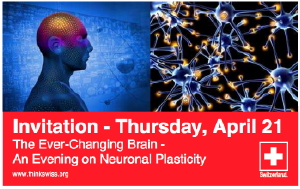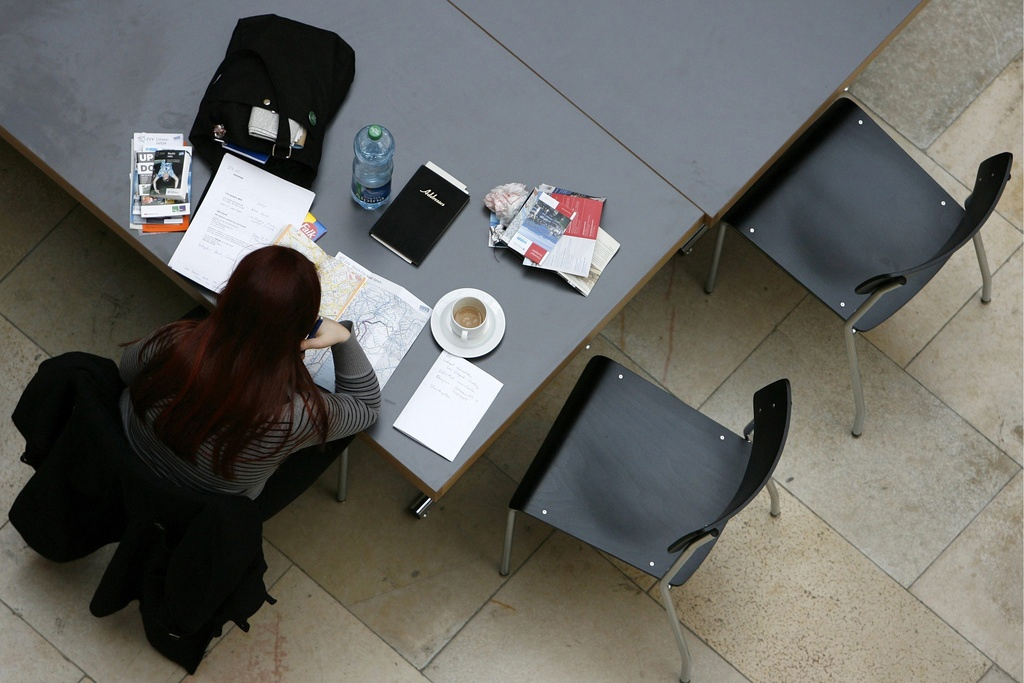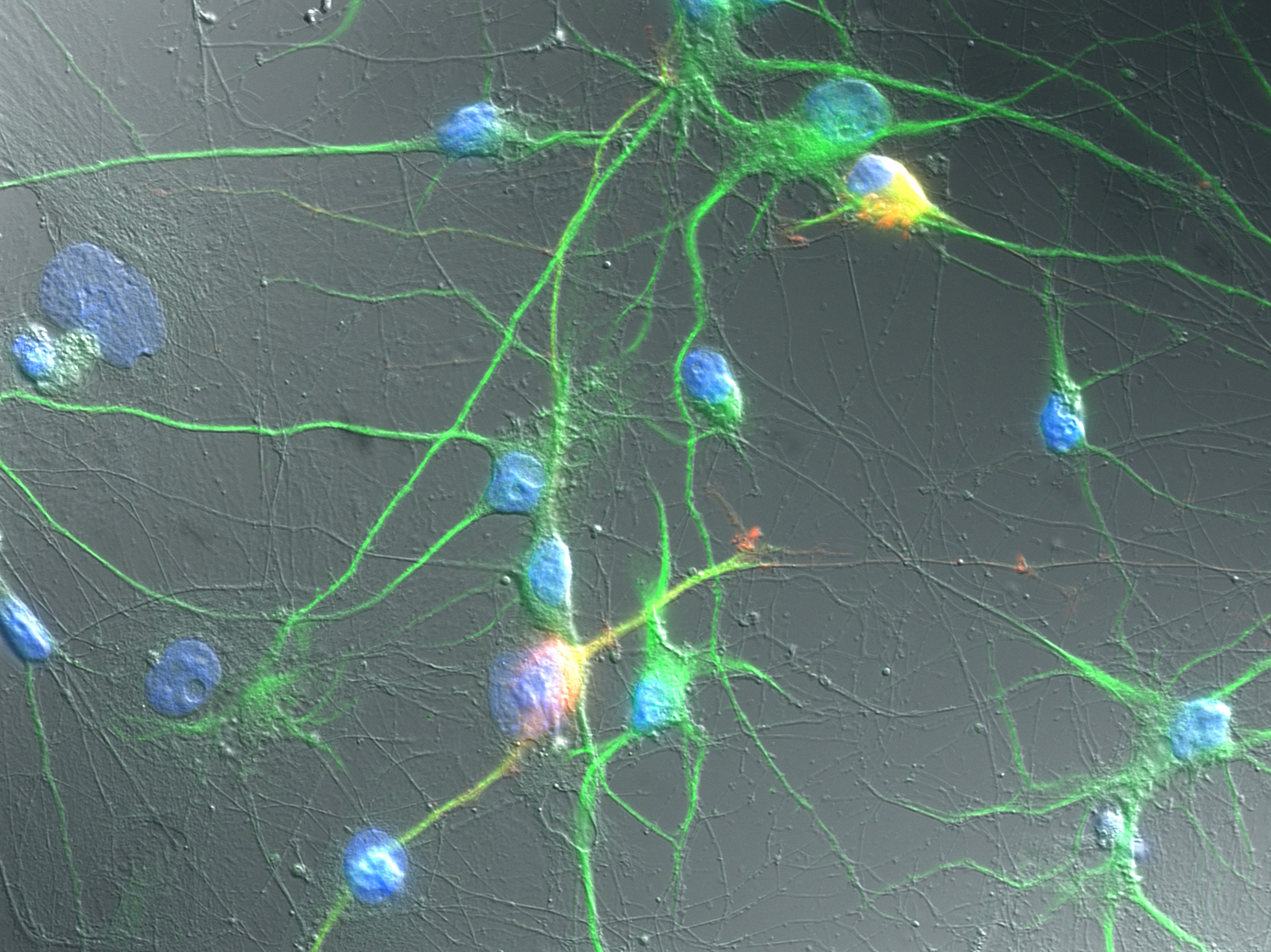New light on how mind meets brain

Unusual collaboration by two Swiss academics into the relation between mind and body could open up the way to new treatments for patients with psychological disorders.
The research by Francois Ansermet, a psychoanalyst from Geneva university, and Pierre Magistretti, a neuroscientist from the Federal Institute of Technology in Lausanne, offers new insights into how we think, behave and act.
On Thursday they spoke about their work to a conference in New York of psychoanalysts, doctors and scientists, explaining how the fields of neuroscience and psychoanalysis interact.
“These are disciplines that have been on opposite ends of the spectrum in terms of understanding how the brain works,” Magistretti told swissinfo.ch. A colleague of the pair has called their attempt to link neuroscience and psychoanalysis to the “unlikely coupling of the polar bear and the whale.”
Ansermet and Magistretti found their respective fields converging through research into neuroplasticity – the brain’s ability to reorganize itself by forming new neural connections throughout life – which shows that our experiences are physically inscribed through “traces” in the brain.
Think of the brain as a rubber-band; expanding and contracting, bending and reshaping and forming new connections throughout one’s life. Our experiences, whether physical or mental, leave traces – like little nicks on the rubber band.
Neuroplasticity means that neurons – specialized cells that transmit information – are changed by experience. New connections between neurons can grow or old ones be pruned away while existing connections can be strengthened or weakened.
Heady stuff
The physical traces revealed in neuroplasticity correspond to a central tenet of psychoanalysis that life leaves its traces on the psyche as well.
“The idea is that the trace for neuroscience and the trace for psychoanalysis are based on the biological facts, which are those of neural plasticity. These are a set of mechanisms by which our brain encodes experience – how we learn, how memory works and how life experience leaves traces in our brain,” Magistretti said.
As we learn to do new things, the connections between our neurons are slightly re-sculpted; when we have an experience and then remember it later, that is because certain connections between neurons are re-activated, regenerating a similar pattern of activity that existed during the original experience.
For example, when your mother smiles at you and gives you a hug, you have a feeling of safety and warmth. A pattern of activity in the brain weaves together the vision of her smiling face, the sensation of the hug, and the feeling of comfort in your body. Remembering her smile can activate that same pattern of activity, creating a feeling of comfort even when she isn’t there.
Unconscious processes
“Interestingly, many of these processes can happen outside of conscious awareness as our brains link our memories, feelings, expectations of the future, and current needs to determine what we are consciously feeling, thinking, and intending in a given moment,” Maggie Zellner, Executive Director of the New York-based Neuropsychoanalysis Foundation, told swissinfo.ch.
“What Magistretti and Ansermet are doing is something unusual – they are linking neuroplasticity with what psychoanalysis calls the dynamic unconscious, which is any mental activity that happens outside of awareness, like fears or wishes. These, in turn, influence our thoughts, feelings and behaviours,” said Zellner, who moderated the event.
Magistretti and Ansermet described how the brain integrates external perceptions with internal reactions and how these associations can then be stored and reactivated in new situations.
For example, if you have the impulse to do something that would make your mother disapprove, your brain can generate a pattern of activity representing her angry face and a feeling of anxiety – what you saw and felt long ago — which then makes you inhibit that impulse right now. But you may be completely unaware that this process is happening.
Treating patients
While the practical application of Magistretti and Ansermet’s model has yet to be determined, experts in the field believe say their research will likely be helpful in treating patients some day.
“Because our ever-changing brain is continually shaped by experience, this means that we all have the capacity to change dysfunctional or unhealthy patterns,” Zellner says.
“Over time, most of us tend to consistently have the same kinds of fears and desires, the same ways of having fun or making ourselves feel better during times of stress, the same ways of relating to others and thinking about ourselves.”
Magistretti and Ansermet’s model suggests that psychoanalytic treatment is one way for people to have greater access to the sets of associations which drive unhealthy mental patterns, and re-sculpt them into something healthier.
Phillip Luloff, a psychiatrist and the associate director of the division of psychotherapy at Mount Sinai Hospital, found inspiration in their work.
“It talks to the hope that one has that there can be change, that the brain is flexible and plastic. And that by the induction of just talk [analysis] they seem to be able show that there is a modification in the structure of the brain, which causes an evolution in perhaps the way the person functions and may lead to the healing in the troubled people with whom we work, including ourselves,” he told swissinfo.ch.
Francois Ansermet is a psychoanalyst, professor, and head of the Department of Child and Adolescent Psychiatry Department of Pediatrics, University Hospital of Geneva and the Department of Psychiatry at the University of Geneva. He is member of the World Association of Psychoanalysis.
Pierre Magistretti is a professor of neuroscience, director of the Brain Mind Institute of the Ecole Polytechnique Federale in Lausanne, and director of the Center for Psychiatric Neurosciences at the University of Lausanne Medical School and Hospital. He has served as the president of the European Federation of Neuroscience Societies.
Answermet and Magistretti have co-authored two books including “Biology of Freedom: Neural Plasticity, Experience, and The Unconscious.”

In compliance with the JTI standards
More: SWI swissinfo.ch certified by the Journalism Trust Initiative











You can find an overview of ongoing debates with our journalists here . Please join us!
If you want to start a conversation about a topic raised in this article or want to report factual errors, email us at english@swissinfo.ch.